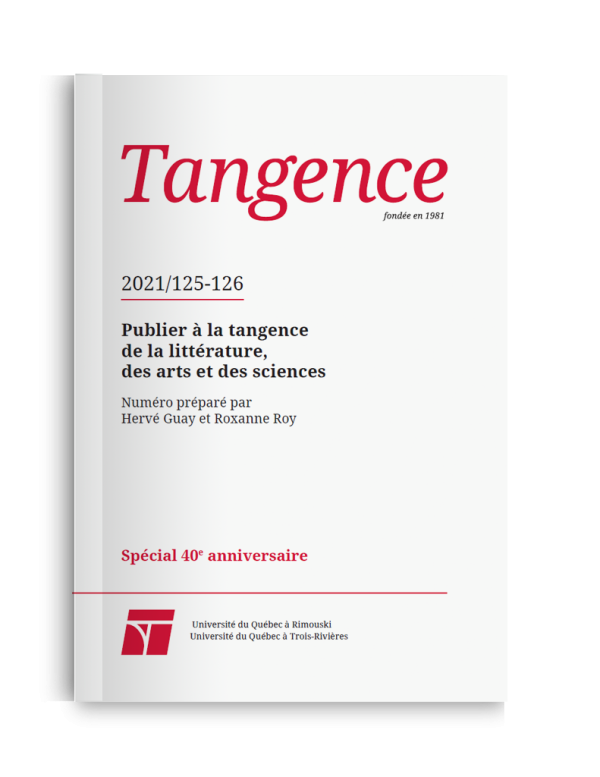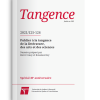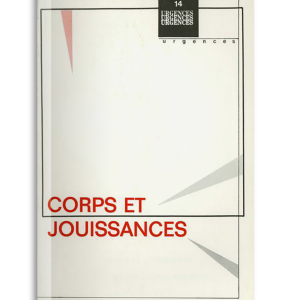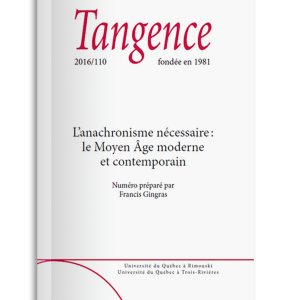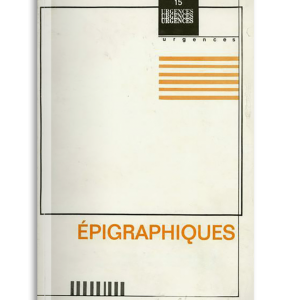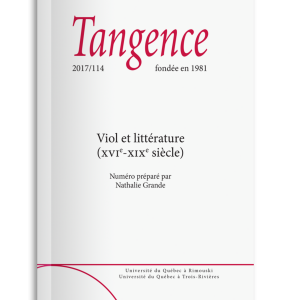What is math fiction ?
Dominique Raymond
Literature and mathematics are generally seen as two parallel domains, the right and left banks of an ocean that might be crossed with the help of a few bridges and overpasses. This article proposes to consider the links between the two domains differently by thinking of math fiction as a literary genre. Starting with the observation that examples of fiction that represent or actualize mathematics are many and varied, we attempt to identify a few predicates that can potentially define math fiction.
Suffocating the ocean one conquest at a time : the underwater exploration of Philippe Diolé and Philippe Tailliez
Myriam Marcil-Bergeron
To correct the “errors” in Twenty Thousand Leagues under the Sea : this was the slogan of the authors when recounting their first diving explorations in the 1950s. However, the promotion of a neutral scientific discourse, purged of the improbabilities associated with Jules Verne’s novel, runs up against the inevitable recourse to language and literary effects to express the euphoria of the ocean depths and the metamorphosis of the diver. Inspired by Plongées sans câbles (Diving without Cables) (1954) by Philippe Tailliez as well as L’aventure sous-marine (The Undersea Adventure) (1951) and Les portes de la mer (The Gates of the Sea) (1953) by Philippe Diolé, among others, this article begins by analyzing the way the water’s surface symbolizes a hermetic border sealing off a mysterious and inexhaustible ocean. It next examines the violent political relationship expressed through a set of hyperboles promoting the conquest of the sea not only in these accounts published over sixty years ago, but also in contemporary discourse on the ocean.
Geopoetic explorations at the intersection of literature, geography and botany
Rachel Bouvet
This article presents the different stages of my transdisciplinary explorations, born of the need to create links and multiply occasions for meetings between disciplines and between the persons who represent them. The first part, devoted to geopoetics, is a theory-to-practice model that seeks to create a “new territory” where the sciences, arts and literature come together. The issue, in other words, is a transdisciplinary field where research and creation are conceived as the two essential components of a sensitive and intellectual approach aimed at intensifying the relationship to the world. Transdisciplinarity is defined here as a place of meeting outside all disciplines, but outside the university context as well insofar as researchers and artists work together, thereby creating bridges between the university and the community. The second part focuses on situating the geopoetic approach of the literary text in relation to other critical approaches exploring the links between literature and geography, namely, geocriticism, literary geography and literary mapmaking. The third part, finally, presents the botanical approach to literature recently developed by the research group L’imaginaire botanique, an approach that falls within the intersection of geo poetics and ecocriticism and focuses on botany, geography and philo sophy. An approach first presented in terms of interdisciplinarity but which became trandisciplinary in scope as well.
After modernity, prehistory : technical environment and sensory rearrangement in J.G. Ballard’s High-Rise
Pierre-Louis Patoine
Written in 1975 by James G. Ballard, the novel High-Rise depicts the reconfiguration of a modern, Brutalist-style high-rise building within an ecosystem where the residents adopt archaic tribal behaviours. Thanks to this reconfiguration, a new human emerges equipped with sensory capacities adapted to the post-modern environment. This article explores the forms of this emergence in the novel and the way it allows readers to experience it themselves by rejecting rationality and good taste in favour of sensationalistic writing and circumventing the law of non-contradiction.
Literature and the medical humanities : examination of an unresolved tension
Daniel Laforest
This article proposes to sketch a brief portrait of the fields of knowledge in literature and the medical humanities insofar as the links between the two are seen as both crucial and controversial. Crucial because the very development of the medical humanities first depended on the the reading and analysis of literary texts in pre-med courses—a tendency henceforth institutionalized with the sub-field of narrative medicine. Controversial because the idea of literature in service to medicine and health revived polemics on the instrumentalization of the arts by the sciences. Now that the medical humanities have become an essential field well beyond the Englishspeaking world, it seems necessary to further question their links to literary studies. We will do this here by suggesting that these links, in their consensual acceptances and pedagogical renewals, remain contained and limited by a false dichotomy, that of a health of literature opposed to a health in literature, where the former manifests as ethics (applicable to other fields), and the latter as poetics (limited to questions of language and aesthetics).
Experiences of thought and thought of the possible, from Fontenelle to Rousseau
Christophe Martin
Enlightenment thought regularly took pleasure in basing its strength of conviction on various thought experiences. Inspired by the general typology proposed by Stéphane Chauvier (Le sens du possible, 2011), we propose to begin by distinguishing the empathic thought experiences particularly frequent in empiricist and sensualist thinking ; to provide access to innate knowledge the reader is unaware they have, the experience of thought must act like a filter that intentionally impoverishes the real so as to better enhance the element to be brought into the light. Exploratory thought experiences, for their part, no longer seek to dispel confusion or unveil a hidden reality, but to induce the acceptance “of gnomic statements that reality refuses to illustrate” (S. Chauvier). From Fontenelle to Diderot, an essential part of Enlightenment thought thus invites us to conceive of possibilities that are well beyond the sphere of what is known. Rousseau deserves a special place in this panorama, not only because thought experience and thought about the possible form a large part of his writing, but also because, in his work, thought experience tends to articulate an element of empathic simulation and an exploratory aim. With Rousseau, thinking experience no longer leads to speculation : it allows for a relationship of critical distance to the real that invites us to discern in reality all the possibilities it contains.
Law and literature, law as literature ?
Christine Baron
The “law and literature” movement, started by lawyers eager to explain their practice using literary examples focused on law, now goes well beyond what the American pioneers imagined. This school of thought, which originated in the United States in the early twentieth century, depicts, some of the time, law in literature and literature in confrontation with the law (trials of writers, censorship) and, at other times, law as literature or even law by literature. Indeed, literary enunciation, by highlighting discursive communities, social evolutions and collective representations, is not content with representing justice : instead, it problematizes it, gives it life, disturbs it, models it even. This disciplinary dialogue is fuelled by, among other things, methodological similarities ; from the production of texts to their reading, literature, like law, makes use of narratives and questions interpretation. Owing to this interaction, the history of the movement was very different in the United States and Europe : historical, literary and, finally, theoretical contexts explain Europe’s belated interest in this tendency that developed on the continent in the years 1990-2000. By broadening perspectives on the practice of law, the invention of the law fiction genre gave this school of thought a new dimension and confirmed its heuristic value.
The Spanish fascist woman in French periodicals devoted to relief and human rights (1936-1939)
Anne Mathieu
This article examines the images of Spanish women during the Spanish Civil War (1936-1939) in six periodicals on the left of the French political spectrum issued by relief and human rights agencies and by organizing committees. The reports, witness accounts, editorials and opinion pieces reveal similar themes and a contrasting view of women during this period. A comparison of the various periodicals studied, across the journalistic genres mentioned above, shows how women participated in combat. Their participation belonged to a dynamic both universal and singular, notably manifested by “everyday heroism” (Edith Thomas). Additionally, like the rest of the civil population, women lived their daily lives under the threat of bombs and suffered bodily harm from attacks. They experienced exodus or exile as well. The discourse in these antifascist articles then went from speaking of woman to speaking of mother. But given the multiple vicissitudes and pitfalls of exile, use of this second word faded, to be replaced by denunciation of the danger incurred by the woman alone. These various antifascist articles during the Spanish Civil War allowed for a perception of Spanish women in war and exile that was just as clear as the perception of women in general. What’s more, they offered a richer knowledge of the periodicals of relief agencies, human rights agencies and organizing committees and of the history of how the war in Spain was received.
Radio fiction as literary work ? Contributions and limitations of literature based on the study of radio drama
Caroline Loranger
Literature quickly appropriated the fiction broadcast over the radio. First perceived as a text rather than a performance, radio fiction became a literary genre, with the difference that it was distributed via another type of support : radio waves. This way of conceptualizing radio fiction, however, had the drawback of neglecting its sound dimension. To address this issue, it was brought rather more in line with theatre, using the dramatic dimension of the actors’ performance and work by sound engineers. Viewing radio fiction based on these two approaches, however, has its limits, and further reflection on its categorization and related issues is needed now that the digitization of radio works makes them increasingly accessible to researchers. This article therefore proposes a reflection on radio fiction’s position within the ecology of literary and media genres to better understand the issues highlighted by its study.
The social sciences and humanities in the era of hypmnesia : the new challenges of research in arts and letters
Jean-marc Larrue
In 2023, UNESCO will celebrate twenty years of the “Convention for the Safeguarding of the Intangible Cultural Heritage”, which aimed to ensure the preservation of the practices, representations, expression, knowledge and expertise that communities recognize as part of their cultural heritage. The initiative was ambitious ; it included the identification, documentation, research, preservation, protection, promotion, enhancement and revitalization of the different aspects of this heritage. The discussions leading to the adoption of this convention began at the turn of the 1980s, that is, at the start of what Milad Doueihi has described as the “great digital conversion.” Now, the Convention did not take into account the major impending upheavals whose consequence would involve distinguishing the intangible cultural heritage within the vast cloud computing universe being formed. Today, the result is amnesic hypermnesia, a paradoxical state affecting the social sciences and humanities in particular. The LIRAHC project briefly described in this article is among the current initiatives attempting to disentangle traces of the cultural heritage from the magma of intangible data to ensure these traces are both preserved and disseminated.
Creation and communication : a media literary approach
Philippe Ortel
Where is the boundary between communication and creation ? The term “creation”, which today tends to replace the term “work”, is used in the world of media itself to describe fiction disseminated on line. Thus, questions regarding the poetics of works are always relevant for describing the different regimes of mimesis, however they need to be articulated for contemporary medial and intermedial issues. This article distinguishes four regimes of creation within the process of representation : representational, fictional, figurative and performative. It compares them term by term based on their modalities of production, reception and evaluation in a table of functions providing a brief comment on each one. Some of these functions fall within the critical tradition, while others are proposed for debate. Drawing its examples from both literature and the arts, this article then attempts to understand the role played by medial or intermedial innovations in the development of these different regimes.
The detour via painting. Writing about catastrophe
Martine Créac’h
In L’adieu à la littérature. Histoire d’une dévalorisation, XVIIIe-XXe siècle, William Marx recalls that the “poetry of disaster” was still possible in the eighteenth century during the Lisbon earthquake because “the powers of consolation” were part of the immemorial contributions of “poetry”, but that this became impossible in the twentieth century after the Great War and the Holocaust. This is demonstrated by Adorno’s “all-too-famous” sentence : “After Auschwitz one can no longer write poetry.” William Marx noted that it was impossible for twentieth-century poetry to speak of catastrophe, whether regarding a natural event or a massacre. I want to revisit this observation by showing that the painting of the past could offer a way to express the apparently inexpressible. I will formulate a dual hypothesis based on approaches by three twentieth-century writers (Claude Simon, Michel Leiris and André du Bouchet) to the effect that the power of certain works of art from the past derives from their capacity to make use of events that did not inspire them and that poetry, through its inconvenient modality, is necessary and valuable precisely when we turn to the art of the old masters to speak about the catastrophes of today.
Delights of stink
Frédéric Charbonneau
This article proposes the re-reading and comparison of some dozen works, some minor, others canonical, written between 1629 and 1887 and devoted in whole or in part to cheese viewed from the perspective of its bad smell as a paradoxical source of pleasure or, conversely, as disgusting. From Saint-Amant’s Cantal to Zola’s Belly of Paris, evocations of the experience of stink attest to not only a profound transformation, but also a remarkable reversibility, explained, in turn, by the history of olfactory sensitivity (Alain Corbin) and by modern thought on aesthetics. Indeed, the eighteenth century saw the immemorial habit of fetid odours and animal smells gradually replaced by the search for mild, plant-based fragrances. This lowering of thresholds of tolerance led to a weakening of offending odours, through dosing or mixing : one could risk a parallel with these pharmaka whose use and dilution alone determined their toxicity or safety. In the modern olfactory landscape, a similar constitutive ambivalence acquires a dimension we will term aesthetic for lack of a better word and which establishes the reversibility of taste and distaste or attraction and revulsion based on the object’s concentration, as Baudelaire suggests in his essay On Wine and Hashish.
The musical ideality of fiction : dissolution or rebirth ?
Frédéric Sounac
The idea of fiction’s movement towards musical structures, which was closely dependent on the Romantic project of “progressive universal poetry”, occurred gradually, accompanying the absolute music movement that took root at the close of the eighteenth century. This article focuses first, on recalling the main attributes of this utopian arrangement, termed meloform, to next observe what might be called its secularization : cut off from the Romantic faith in the supremacy of art and deprived of its ontological roots, the “musical” novel tended, after the Second World War, to adopt a more pragmatic attitude, notably embodied in the less totalizing, often isomorphic narratives of singular musical opera. In recent times, thanks to novels like The Time of our Singing by Richard Powers, Apologie de la fuite by Léonid Guirchovitch, Confessions by Jaume Cabré or Central Europe by William T. Vollmann, there seems to be a “rebirth” of complex fiction that is ambitious, polyphonic and reflexive, one that reconnects, without reverting to all of Romantic doctrine, to the ideal of a musical ideality of the literary text.
From the house dance to ballet : decolonization of dance in France
Lucille Toth
Class struggle, gender-based violence, systemic racism : dances like hip-hop, the house dance or voguing have historically spoken for minority voices by becoming an intersectional space bringing together plural French identities. Other dances such as classical or folk dance, are similarly used as a way to model bodies and standardize them in the interest of social docility and to preserve a dance based on an imperialist model. By exploring the house dance, a form still misunderstood by the public at large in France, and comparing it to classical dance, this article proposes to reflect on French resistance, to think about contemporary dance in its diversity. It also responds to the current debate on the decolonization of the arts that contrasts “antiracists” and “universalists.”

